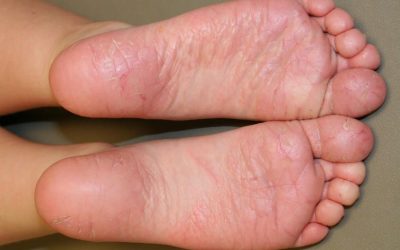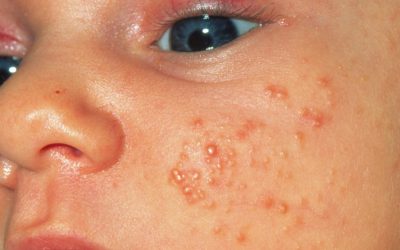Soft fibromas (papillomas)
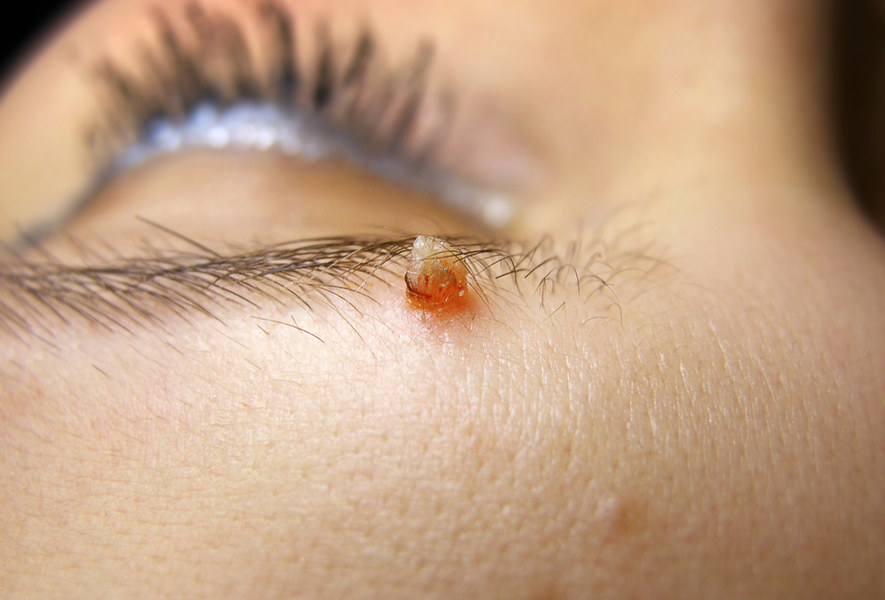
Soft fibroids (papillomas) are benign, non-infectious, non-contagious skin lesions that are harmless to health. However, if they are continuously traumatised, the conditions for infection are created.
Clinical signs
- a skin-coloured or brownish small bump on a thin leg
- typical sites: neck, armpits, pubic area, groin in women, less commonly eyelids
- may be multiple
- painless
Risk factors
- genetic predisposition
- overweight, obesity
- high blood cholesterol
- glucose intolerance, diabetes mellitus
- due to hormonal changes in the body during pregnancy
- there is no consensus on whether the HPV virus is involved in the development of soft fibroids
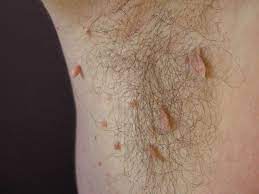
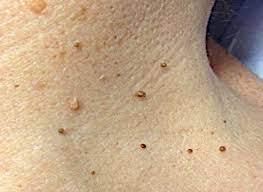
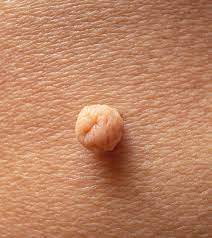
- based on clinical features (discussed above)
- by examining the lesion with a dermatoscope (a special device that magnifies structures) according to the characteristic dermatoscopic features.
Treatment
- Removal of soft fibroids is recommended if they are persistently traumatised, obstructive, bleeding, or if they interfere with vision in the eyelid area. However, they are usually removed for aesthetic reasons.
- treatment methods are destructive: small ones can be removed by cryotherapy (cold treatment in a medical facility using carbon dioxide or liquid nitrogen), larger ones by electrosurgery or laser treatment
- soft fibroids that appear during pregnancy may disappear on their own a few months after birth
There is no definite explanation for soft fibroids, so the only way to prevent them is to adjust risk factors: maintain a normal body weight (BMI under 25), and adjust blood cholesterol levels if needed.
IMPORTANT:
There is a common misconception that all skin lesions on the foot are papillomas. Neurofibromas (a genetic disease manifested in the skin), papillomatous moles, especially if they have deeper pigmentation and are visible as skin-coloured nodules on the body, and infectious molluscs or thread warts, can also sometimes support papillomas at first glance. Therefore, we do not recommend self-treatment of soft fibroids (papillomas) at home.

Psoriasis
A common, chronic, inflammatory, recurring skin disease that affects 2-3% of the population. Psoriasis can start at any age, and is most often found in adults.
Juvenile plantar dermatosis
a disease characterized by localized damage to the feet. JPD usually occurs in children between the ages of 3 and 14 who are prone to atopy or have atopic dermatitis
Skin Conditions in Newborns: Causes, Symptoms, and Care Tips
Skin conditions like rashes, eczema, and cradle cap are common in newborns. Proper skin care is essential for managing and preventing these issues. Learn how to care for your baby’s delicate skin and address common skin conditions effectively.
iDerma
MB iDerma
Fabijoniškės g. 99, Vilnius
+370 671 33323
[email protected]



